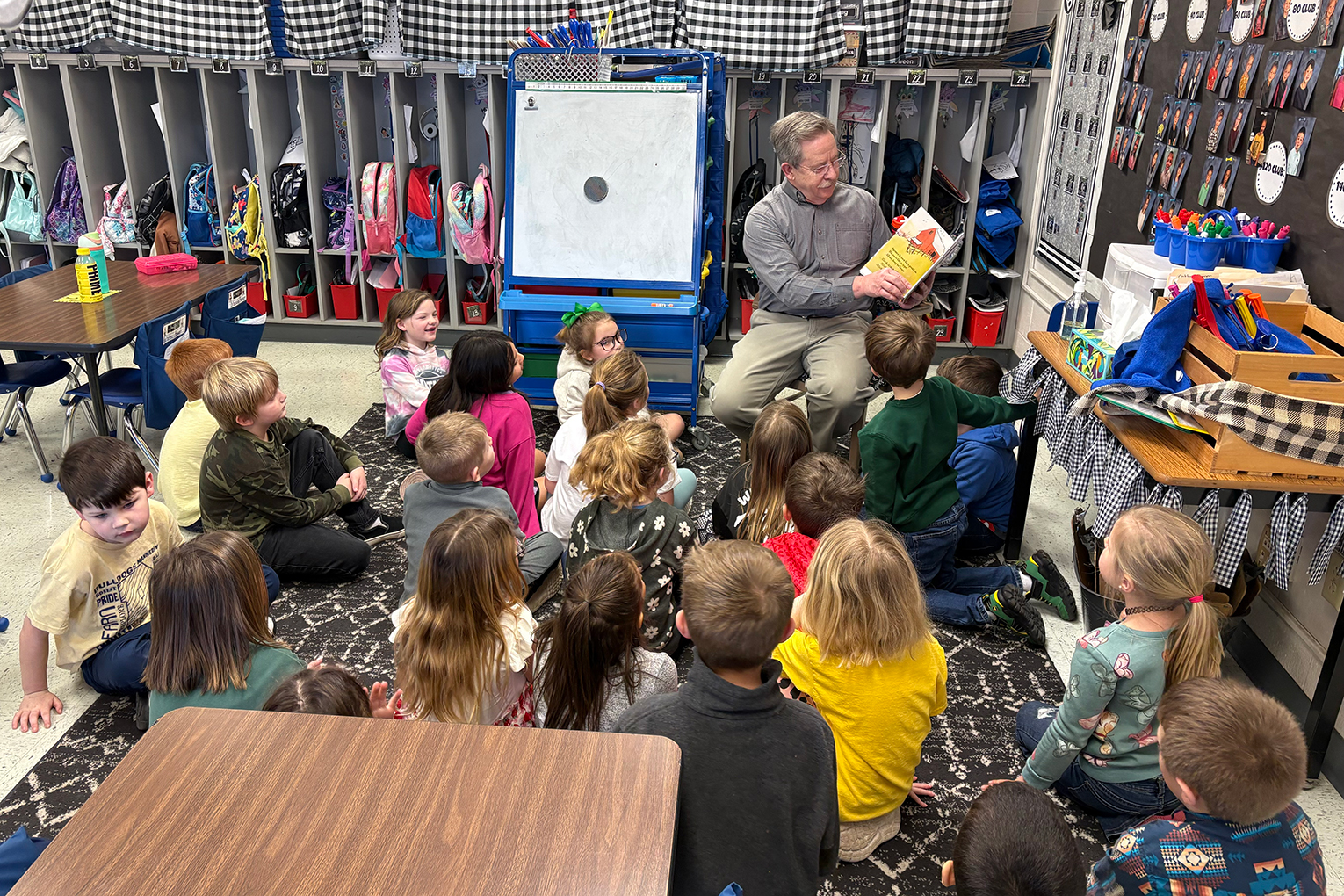
Garris Landon Stroud
I had just finished my first year of teaching 8th-grade science and it was a treadmill of progress. I enjoyed working with the new science standards, but I knew that this was a completely different game from the science education I received in my formative years.
While I strived to implement these instructional changes with fidelity, I realized there was still something missing. In order to transform science education in Kentucky, we as teachers must transform our own outlook about what it means to deliver high-quality science instruction.
For me, too much of my first year of teaching relied upon direct, explicit instruction. I was a “sage on the stage” sort of educator. While my lectures were often hailed as comical, witty and entertaining, I still failed to reach my students the way they needed. I was making my students meet me at my comfort zone rather than differentiating instruction to help all students reach their potential.
And upon that realization, I flipped – my classroom, that is.
The flipped classroom – so-called for its inverted approach – flips traditional instruction with hands-on engagement. I did some research, talked with some of my students and decided that it was worth a try. So what exactly did it look like?
Flip the script
The flipped classroom method of instruction gives students more flexibility in their learning, as the delivery of content can take place at home on their own time. Students in my flipped classroom received essential knowledge the night before each class. I use a combination of TED Talks, YouTube lectures, informative documentaries and videos, podcasts, and other media to help disseminate basic content knowledge to students.
We’re living in the Information Age, after all, where it no longer matters what you know; it only matters what you do with what you know. The flipped classroom method allowed me to use precious classroom time to facilitate this through differentiated activities and hands-on projects.
The flipped approach is a great way to embed this philosophy within your instruction. As students become responsible for their own learning outside of class, you’ll experience a greater freedom to design and differentiate engaging activities in class to facilitate deep learning.
Flip the Formative Assessment
As you change your instruction from a traditional style to the flipped method, you also must “flip” your assessment strategies. Since flipped instruction takes place at home, formative assessments take on a larger importance because we need to really assess how well our students understood the content. After students have viewed or listened to the required content at home, flipped teachers should formatively assess their students’ understanding the next morning by having them identify key concepts or summarize the material they’ve just digested.
A basic quiz or 5-minute essay can help you assess the level of understanding that your students possess for any given learning target in your flipped classroom. This mastery also drives differentiation as you approach the in-class hands-on activity that replaces traditional instruction. Students who demonstrate obvious mastery may need additional rigor in their in-class, hands-on activity, while students who did not achieve mastery on a flipped lesson’s learning target can go back and review the material from the previous night before attempting the deeper learning assignment in class.
As students continue to display varying levels of mastery of each night’s content, it’s a good idea to differentiate class-time activities – as well as the formative assessments that will accompany them – to better individualize your flipped classroom approach.
Flip the Student Learning Process
Sometimes modern instruction is still reflective of age-old practices: introduce the concept, provide guided practice, assess and re-teach. While there is certainly nothing wrong with taking a page from the great educators who have gone on before us, the flipped classroom approach provides a foundation for teachers to transform and modernize the educational process in a way that encourages deep learning.
It all flows from Bloom’s Taxonomy, a hierarchical model that shows how varying educational objectives differ in complexity. The lowest levels of the taxonomy rely mostly upon students identifying and remembering information, and this can be facilitated through the flipped videos and media that students view at home. But for those students who already have demonstrated they understand basic concepts, deeper thinking can be facilitated through the hands-on, engaging activities that occur during class time as a result of the flipped approach.
How did this look in my classroom? I remember one particularly standout lesson in which we were talking about innovations in agricultural engineering. One of the key concepts we discussed was vertical farming, a style of “futuristic farming” in which crops are nurtured and grown in skyscraper-esque structures that provide less wasteful methods of irrigation while maximizing plant growth.
Instead of lecturing for a whole class period, I directed students to various YouTube clips and short documentaries about vertical farming and then assessed their understanding the next morning. After ensuring that students had an adequate understanding of how vertical farms work, they used class time to actually design and construct their own models of vertical farms, working in teams to develop schematics and apply their knowledge from the night before. The flipped approach in this example gave students the opportunity to construct an artifact of their learning, and helped embed concepts from engineering within their creations. And it was fun, too!
While the flipped classroom method may take some time and effort to perfect, it can yield some incredible, empowering results. As one of my 8th-grade science students put it, the flipped approach offers “a new method of learning that was an awesome experience to have. It’s different than any science class I’ve had before.”
The flipped approach allows students to work at their own pace, and many enjoy the freedom it provides them to explore their own interests within a given standard or learning target. My students enjoyed it, my colleagues were intrigued by it, and it finally gave me the satisfaction that I had been missing in my traditional teaching practices.
But don’t take it from me – go ahead and flip for yourself.
Garris Landon Stroud is a 7th-grade teacher at South Hopkins Middle School (Hopkins County). He also is an author whose works have appeared in such publications as the Kentucky English Bulletin, Science Scope and Education Post. Stroud is a graduate student at Murray State University and his interests in education include teacher leadership, global competency, culturally relevant pedagogy and TESOL. He was recently named a 2017-18 Kentucky State Teacher Fellow and has been invited to present at the 2018 Global Issues in Multidisciplinary Academic Research Conference in Tokyo this February.



I was fortunate when I implemented my flipped classroom last year — all students had some means to access the Internet. For students without Internet access, flipped teachers would have to forego sources like videos and podcasts and instead opt for printed lessons, PowerPoint slides, articles, or other text-based methods of learning that could still hit the content without requiring an online connection. This is not as engaging for the students, but it could be done.
Another thing to consider is that you don’t necessarily have to flip for all students. This year, my flipped classroom serves as a means of differentiation for my GT science students. This lets them explore the content more deeply while other students receive traditional instruction.
How do you allow for students that do not have internet access?